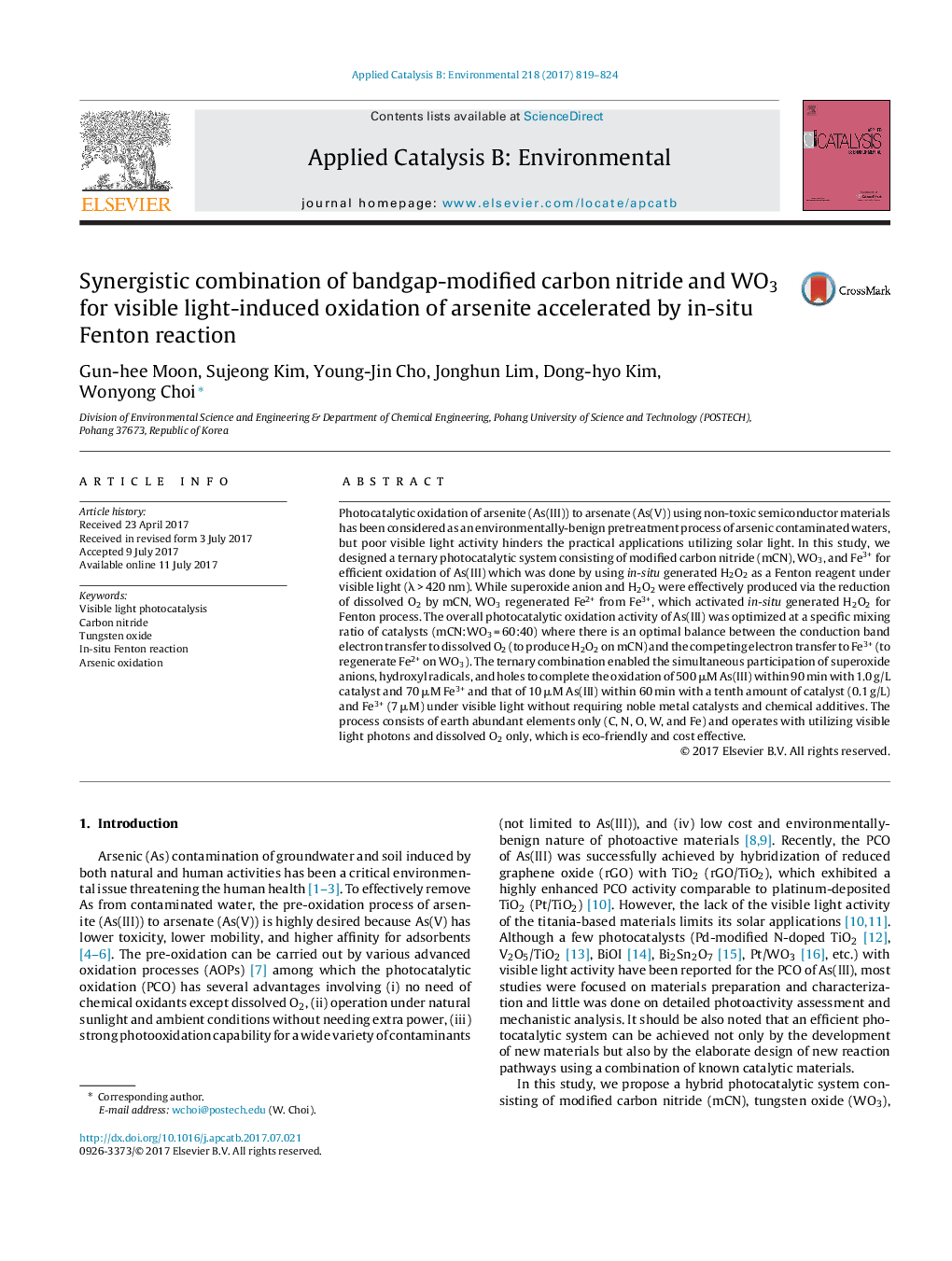| Article ID | Journal | Published Year | Pages | File Type |
|---|---|---|---|---|
| 6453859 | Applied Catalysis B: Environmental | 2017 | 6 Pages |
â¢A synergistic combination of bandgap-modified carbon nitride (mCN) and WO3 coupled with ferric ions is proposed.â¢In-situ formed H2O2 and its activation by Fe2+ highly accelerates the photocatalytic arsenic oxidation under visible light.â¢H2O2 is produced mainly by mCN part and the regenerative cycle of Fe3+/Fe2+ is mainly driven by the WO3 part.
Photocatalytic oxidation of arsenite (As(III)) to arsenate (As(V)) using non-toxic semiconductor materials has been considered as an environmentally-benign pretreatment process of arsenic contaminated waters, but poor visible light activity hinders the practical applications utilizing solar light. In this study, we designed a ternary photocatalytic system consisting of modified carbon nitride (mCN), WO3, and Fe3+ for efficient oxidation of As(III) which was done by using in-situ generated H2O2 as a Fenton reagent under visible light (λ > 420 nm). While superoxide anion and H2O2 were effectively produced via the reduction of dissolved O2 by mCN, WO3 regenerated Fe2+ from Fe3+, which activated in-situ generated H2O2 for Fenton process. The overall photocatalytic oxidation activity of As(III) was optimized at a specific mixing ratio of catalysts (mCN:WO3 = 60:40) where there is an optimal balance between the conduction band electron transfer to dissolved O2 (to produce H2O2 on mCN) and the competing electron transfer to Fe3+ (to regenerate Fe2+ on WO3). The ternary combination enabled the simultaneous participation of superoxide anions, hydroxyl radicals, and holes to complete the oxidation of 500 μM As(III) within 90 min with 1.0 g/L catalyst and 70 μM Fe3+ and that of 10 μM As(III) within 60 min with a tenth amount of catalyst (0.1 g/L) and Fe3+ (7 μM) under visible light without requiring noble metal catalysts and chemical additives. The process consists of earth abundant elements only (C, N, O, W, and Fe) and operates with utilizing visible light photons and dissolved O2 only, which is eco-friendly and cost effective.
Graphical abstractDownload high-res image (155KB)Download full-size image
